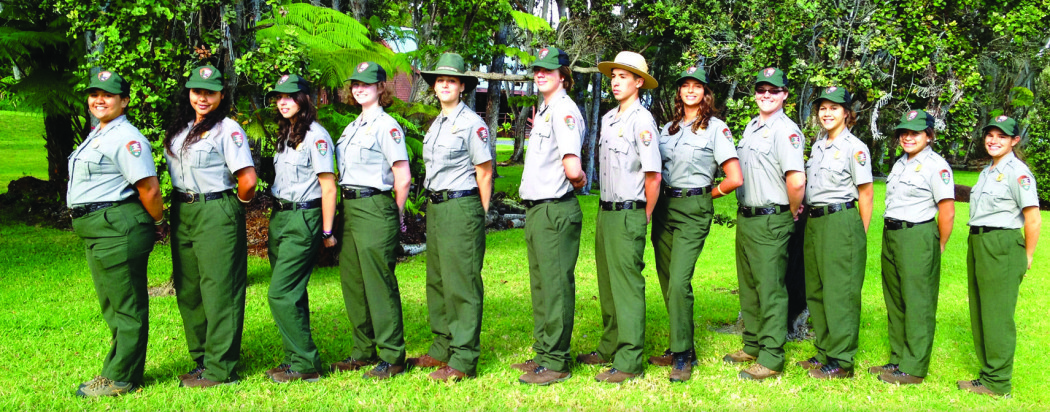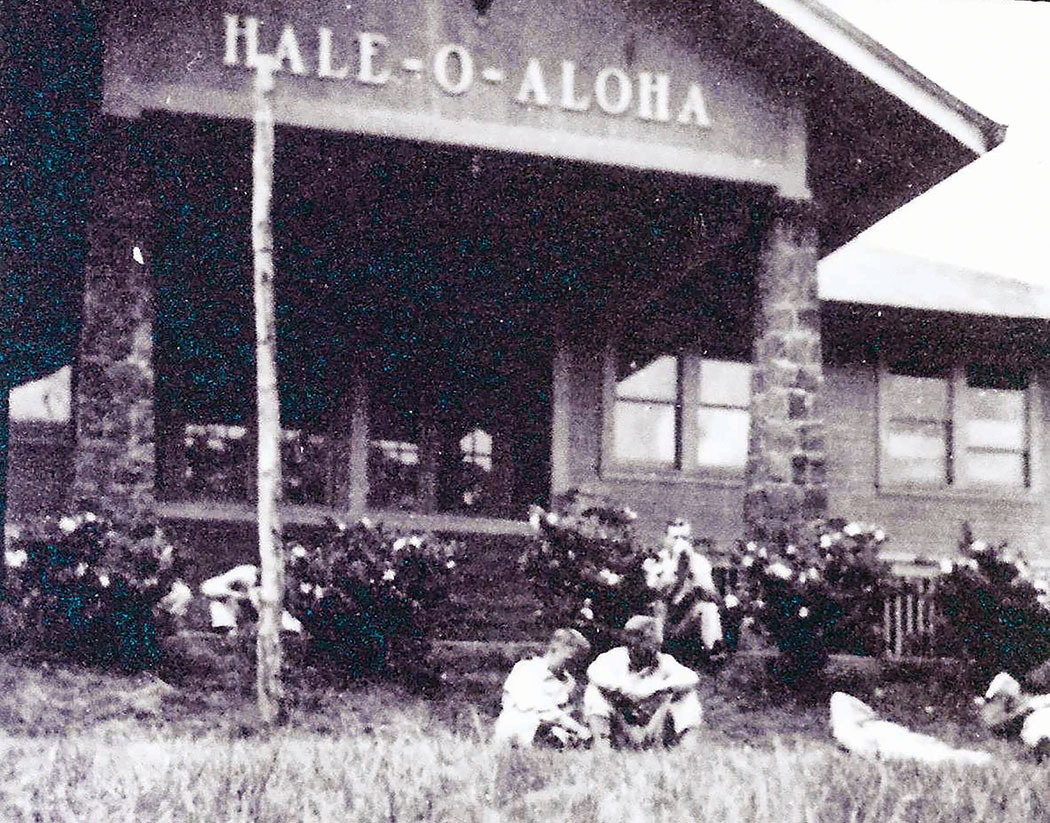
Then & Now: Kīlauea Lodge–Warm Up, Freak Out, Chow Down: Friendship, Ghosts, and Gourmet Cuisine

By Alan D. McNarie
Even from a distance, the fireplace in the dining room of the Kīlauea Lodge and Restaurant in Volcano is an impressive structure.
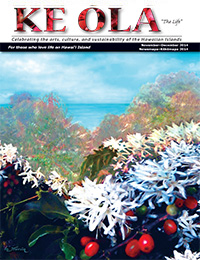
Large memorabilia imbedded in the fireplace matrix grab your gaze: Hawaiian poi pounders, dinosaur vertebrae, the Hawaiian salt stone (a large basalt rock with a shallow pan scraped in it, originally used for evaporating sea water into salt), the huge section of petrified wood log, and of course, the bronze plaque proclaiming, International Fireplace of Friendship.
The closer you look, the more treasures appear: dozens of ancient and international coins, exotic minerals, a bit of white quartz embedded with gold, a Mexican opal.
Some treasures you can only appreciate if you’ve read the lodge’s little brochure on the fireplace. The unassuming little brown stones located above an unfinished Hawaiian adze near the center of the fireplace, for instance, were picked up in front of George Washington’s tomb at Mount Vernon, other small stones from the Dead Sea, and the Mount of Olives.
Some, such as the round stone from the ruins of the Acropolis in Athens, and a cave formation from Carlsbad Caverns, could not have been legally collected today. But the rules were somewhat different in 1938 when the fireplace was built.

For decades, the lodge has been known for its fireplace and for its luxurious European-inspired cuisine: Duck L’Orange (broiled duck breast with apricot mustard glaze and caramelized orange peel), Hasenpfeffer (braised rabbit in a hearty wine sauce), and Lamb Provençal (rack of lamb baked with fresh herbs and seasoned bread crumbs) entice diners nightly.
When the fireplace was built, the lodge served a very different clientele; it was Hale-O-Aloha, the centerpiece of the Hawai‘i YMCA’s mountain camp.
The fireplace was the brainchild of Harold Lucas, who served as secretary of the local branch of the YMCA in the 1930s. According to Lorna Larsen-Jeyte, who now owns Kīlauea Lodge with her husband Albert, Harold also built a similar fireplace in Estes Park, Colorado, when he was assigned to the YMCA there.
Harold cultivated a wide range of overseas friends, many of them connected with the YMCA, Rotary International, and Lions Clubs. When Camp Hale-O-Aloha was under construction, he sent off scores of letters, asking for rocks or coins from all over the world to embed in the fireplace. Some of the letters were accompanied by a small book of poems that Harold had composed about Hawai‘i.
Volcanologist Thomas Jaggar, founder of Volcano Observatory, was serving as President of the local YMCA at the time and wrote to contacts in the National Park Service. Those contacts responded with granite from Yosemite, rhyolite from Yellowstone, and novaculite from Hot Springs, Arkansas.
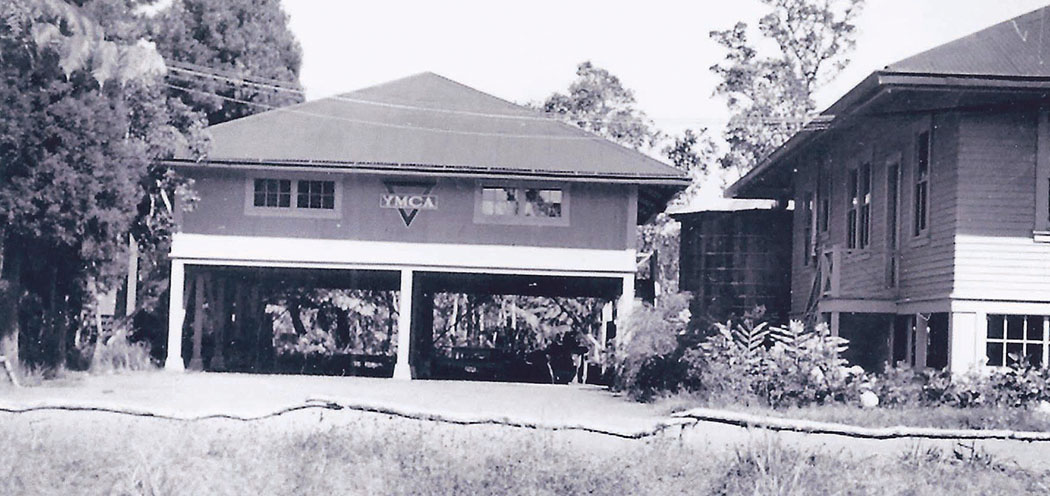
All told, over 100 clubs and individuals responded from across the U.S. and from dozens of countries and territories, including New Zealand, Scotland, Lebanon, Bulgaria, Malaya, Hong Kong, India, Canada, Turkey, Thailand, the Philippines, Norway, and the Holy Land.
In addition to the rocks, over 500 coins poured in from over fifty countries.
Members of the Westervelt family donated 10 acres, including a small summer cottage built in 1909 to the YMCA camp (some early documents refer to the new camp as Camp Westervelt).
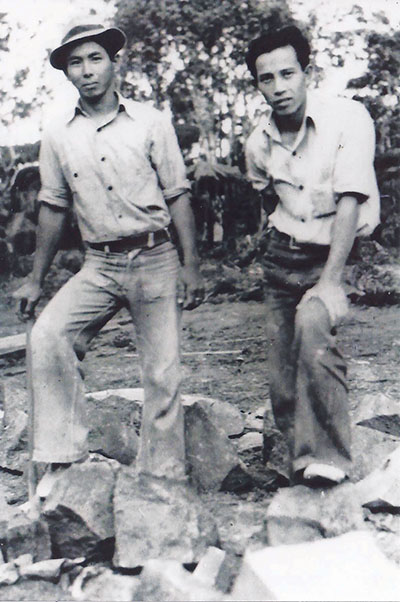
In 1936, construction began on a dormitory, for campers, and the impressive main hall with its porte-cochère supported by massive columns of volcanic basalt, its central dining hall with its lofty cathedral ceiling, and, of course, the grand fireplace with all its worldly adornments.
In Oct. 1938, about 400 people from across the islands gathered to watch Jaggar and some young campers light the fireplace’s first fire from driftwood that the campers had gathered from the island’s beaches.
During World War II, the camp became an army radio school. Afterward, it resumed its original role, welcoming young campers and hikers from the YMCA, YWCA, 4-H, and other youth groups. It may sound like a pretty luxurious “camp,” with its indoor meals, bunk beds, and the manicured garden left by the Westervelts. The “Y” installed archery ranges and baseball diamonds. The kids still “roughed it” in some ways, of course. There was no hot water, for instance—this was chilly Volcano, and most of the kids were from warm coastal towns.
“Japanese kids normally take baths every day,” notes owner Lorna. She continues, “but some of the kids wouldn’t bathe for a week, because the water was so cold. They lied to their parents when they went home.”
Some kids also took the icy water as a challenge, going for night swims in the camp’s redwood catchment tanks.
They also faced another nocturnal challenge: the camp’s reputed ghost. Faucets reportedly turned on by themselves, bathroom stalls would reportedly lock themselves from the inside, and locked doors would fly open. The apparition still makes occasional appearances.
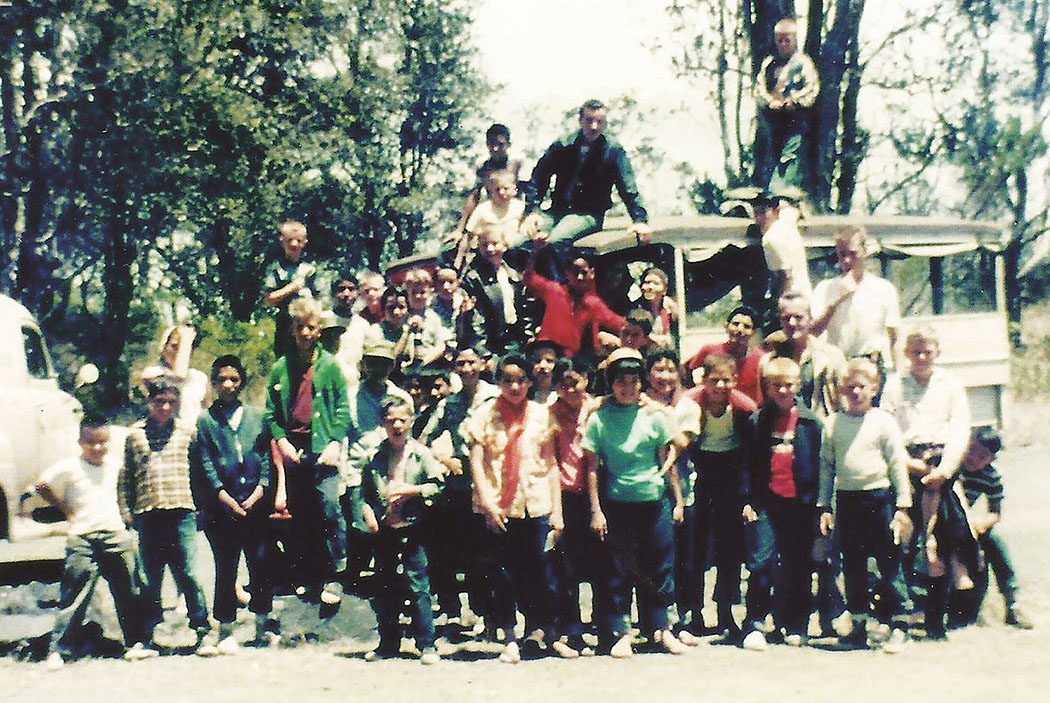
Lorna says that one encounter happened when a female friend from O‘ahu spent the night in one of the guest cottages behind the main building.
“She said one day she was walking back to the lodge. This spirit came right toward her. It was a light, but it was definitely a man, a male spirit. The spirit passed right through her,” Lorna says.
The spirit has also manifested to at least two other female guests, government employees staying at the lodge and working at the national park.
The Jeytes finally consulted a Hawaiian kahuna, who said it was the spirit of a young Hawaiian man. She suspected it was a bird catcher who had died in a lava tube.
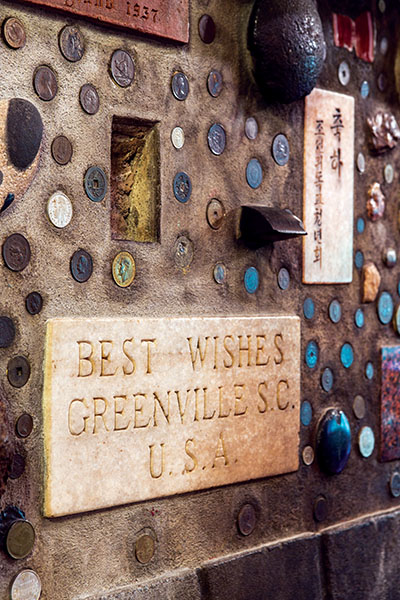 In the days before Europeans arrived, few people traveled the island’s upland rainforests except bird catchers, who gathered native birds to supply feathers for the capes of the ali‘i. Partly in the ghost’s honor, perhaps, the dining room today displays a large painting of a Hawaiian bird catcher by local artist Gwendolyn O’Connor.
In the days before Europeans arrived, few people traveled the island’s upland rainforests except bird catchers, who gathered native birds to supply feathers for the capes of the ali‘i. Partly in the ghost’s honor, perhaps, the dining room today displays a large painting of a Hawaiian bird catcher by local artist Gwendolyn O’Connor.
When the Hilo YMCA was wiped out in the 1960 tsunami, the organization decided to sell the Volcano camp to finance a new Hilo facility. Virginia and Bill Dicks purchased the property.
“They saw the potential in this place for a restaurant and gift shop,” recounts Lorna.
For a while, Virginia and Bill ran a lunch shop in the former camp’s great room; they became famous for their “mile-high pie.” Then Bill suffered a heart attack in 1973. Around the same time, the new Volcano Highway opened, turning the road past the former YMCA camp into a by-way, and the lunchroom’s business dropped. The pair closed the shop and used the building as a private home, then finally put it on the market.
Enter the Jeytes.
Albert was a makeup artist at the time, working on “Magnum P.I.” Lorna was a school teacher who had grown up in Hilo.
“Tom Selleck said that when the series ended, Albert would have to return to Los Angeles for his next assignment,” recalls Lorna.” I said I wasn’t going to live in Los Angeles.”
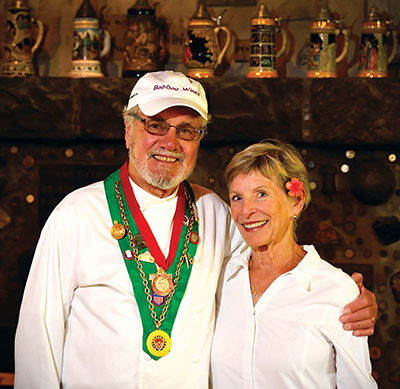
They saw the Volcano property advertised, looked it over, and fell in love. On New Year’s Eve of 1986, they made an offer.
“I said, ‘Oh, my god, what have we done?’” Lorna recounts.
They didn’t know the first thing about owning a restaurant.
Yet the community demanded an alternative to Volcano House, because that was the only other place to eat.
Lorna remembers, “So Albert said, ‘We’ll figure it out.’ He’s a can-do guy.”
Albert bought books on restaurants and began studying. He was still working in Honolulu for “Magnum PI.” He went out to Sand Island there and found some used restaurant equipment.
They bought a used stove and counter-top refrigerator.
“In the 1980s those things were much better built than they are today,” explains Lorna.

They picked up the restaurant’s furniture from an O‘ahu restaurant that was closing. They had to get new commercial permits for the kitchen, which “took ages and ages.” Albert tore up the dining room’s orange carpeting, then stripped and refinished the wooden floor beneath. The room’s orange curtains went away, too, as did the orange fabric on the couch in front of the fireplace. They hired architect Virginia McDonald to draw up plans for converting the former camp dormitory into modern lodging, and Boone Morrison, who specializes in historic buildings (see “Boone Morrison: Hawai‘i’s Leading Restoration Architect” in Ke Ola, Sept.-Oct. 2014) to refurbish the tiny downstairs apartment in Hale-O-Aloha.
Meanwhile, they lived in the once and future dining room.
“We became laughingly known as the ‘Opening Soon Restaurant’ because it took nearly a year before we could open,” chuckles Lorna.
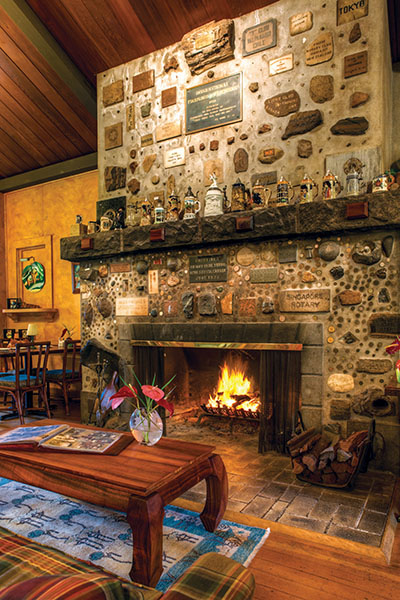
Finding financing was a challenge, too. Bank of Hawaii wouldn’t give them a business loan since they had no restaurant experience; however, it was willing to give them a second mortgage on their home.
They also borrowed $10,000 from Lorna’s mother. When they were nearly out of money, Selleck decided to do one more season of “Magnum P.I.,” so Albert flew to O‘ahu on weekdays and returned to work on the restaurant on weekends.
They finally opened their doors in 1988 with Lorna as the hostess. When their chef stumbled while carrying a pot of water and was badly burned, Albert resolved to take over that job.
“I said, ‘You don’t even know what a white sauce is,’” Lorna recalls.
“He said, ‘You know what a white sauce is. You can teach me.’”
At first, the results were not encouraging.
Lorna remembers, “People would cut into the duck, and it would go flying off the plate, it was so tough!”
So they borrowed more money and flew a chef and his whole family over from O‘ahu to give Albert a crash course in cooking. In four days, Albert had it down.
Later, for Albert’s 50th birthday, Lorna found a chef’s school in France that offered instructions in English. They headed to France for a seven-day course in French cooking.
“I thought I was just going to eat and drink,” she sighs. “But the school was set up for students to work in three teams. One person didn’t show up, so I had to cook, too.”
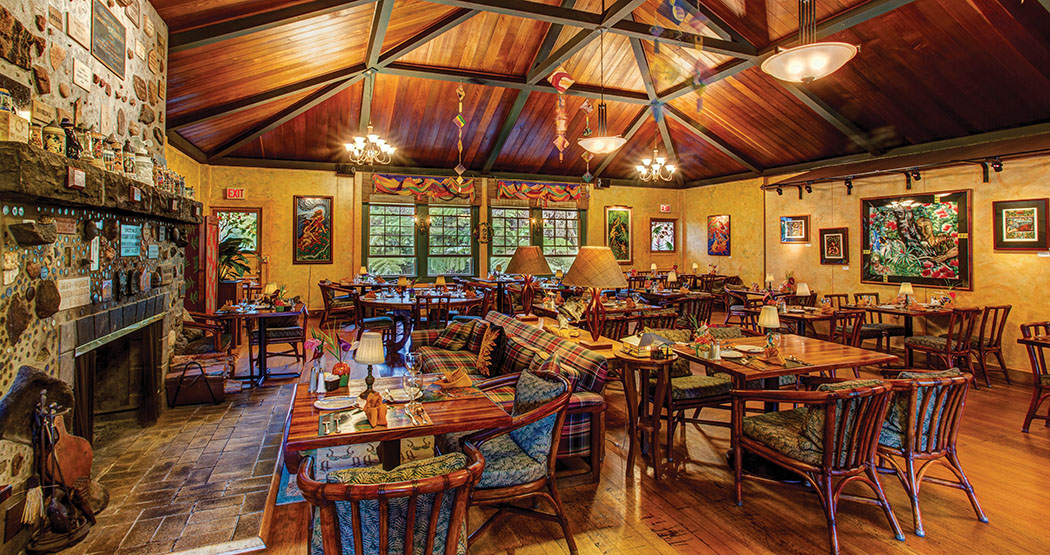
Albert has continued to self-educate, reading books by French and German chefs, and experimenting with new recipes in a personal kitchen downstairs. The traditional European recipes on the menu have been joined by such dishes as leg of antelope fillet in red wine sauce with shallots, mushrooms, and bell peppers. The lunch menu features buffalo burgers and antelope sandwiches. Chef Albert has long since come into his own, and the menu has gotten as international and eclectic as the fireplace.
In the early days, many of the diners were also lodgers, happy to have a meal within an easy walk to their rooms. Today, the restaurant is popular with local diners. One recent afternoon, about half the lunch crowd was Volcano residents. As the restaurant’s reputation has grown, itʻs attracted its share of celebrity diners: Robert Redford, Richard Chamberlain, Helen Mirren, Lily Tomlin, Danny DeVito. Once, director Jill Taynor treated her whole film crew to dinner there. On another occasion, Ted Turner rented the entire dining room for an evening.
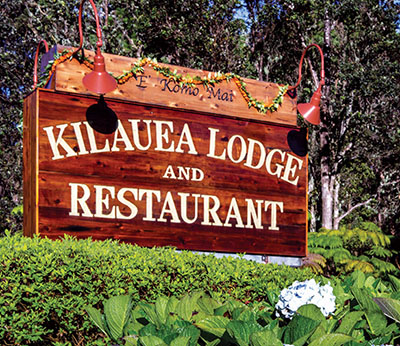
“Ted says, ‘You know, Albert, we have a lot in common. We were both in the television industry, we both have restaurants, and you were a makeup artist and I was a make-out artist,’” Lorna recalls.
The upscale clientele often stop to study the fireplace, to look at the strange coins, and read the inscription from far-off lands in times long passed.
Parts of the atmosphere of Kīlauea Lodge now are the modern paintings by Dieterich Varez and Caren Lobel Fried, the gleam of the koa tables, and the aroma of exotic gourmet dishes. Part of it, too, is still the echo of long-ago goodwill from a hundred exotic places, and the ghostly laughter of children. ❖
Contact Kīlauea Lodge: KilaueaLodge.com
Contact writer Alan D. McNarie: amcnarie@yahoo.com
